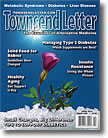|
The scientific consensus on when solid food should be introduced into a baby's diet has shifted dramatically. Those of us who were trained in years past left school with complex schedules that stringently delayed introductions of potentially allergenic foods. The common practice in pediatrics was to delay solid-food introduction, especially of highly allergenic foods such as egg and cow's milk, in the belief that this would prevent the development of atopic conditions such as allergic rhinitis, eczema, and food allergies. The goal was to delay introducing allergenic foods until 12 months (cow's milk and dairy), 24 months (eggs), or even 36 months of age (fish, tree nuts, peanuts).
We need to forget this idea. Such schedules are no longer appropriate, as recent studies suggest that these delays may actually increase risk of allergies.
A recent paper by Palmer et al. reminds us of this change. Palmer conducted a double-blind, randomized, controlled trial in which 86 4-month-old infants with moderate to severe eczema were divided into two groups and about half (n = 49) were fed 1 teaspoon of raw whole egg powder mixed into their daily rice cereal until they were 8 months old. If what we were taught were true, this early introduction of egg, in particular raw egg, should have wreaked havoc, dramatically increasing their allergies. The "control group" ate rice cereal without the raw egg powder.
By 12 months, 33% of the infants in the egg group vs. 51% of infants in the control group were diagnosed with IgE egg allergy. Although this difference was not statistically significant, the egg-fed children were trending toward a lower risk of allergy; early introduction of a highly allergenic food, raw eggs, did not increase risk.1
The Palmer study is not alone in questioning the validity of delaying food introductions.
Filipiak and Zutavern reported in 2007 on the association between solid food exposure and eczema. Among 4753 infants, there was an increased risk of eczema for those who avoided egg in their first year of life. Based on these data, the authors found no evidence to support "… a delayed introduction of solids beyond the fourth month nor a delayed introduction of the most potentially allergenic solids beyond the sixth month of life for the prevention of eczema."2
In 2008, Zutavern et al. reported that in a group of 2073 children, delaying introduction of solid foods past 4 or 6 months did not reduce the incidence of developing atopic conditions. In fact, food allergies were actually more frequent in children who had been exposed to solid foods later in life.3
In the Palmer study, no protective effect against development of atopy was seen as a result of early exposure to raw egg. This lack of protective effect could certainly be due to the population included in the study. At baseline, 36% of the infants already had elevated egg-specific IgE levels, and 31% of these patients in the egg group had an allergic reaction to the egg powder. This information indicates that children with moderate-to-severe eczema are already sensitized to egg before they are ever fed it. Further studies are needed to investigate the cause of this presensitization. The authors of this study suspect transfer of maternal antibodies in utero or through breast milk. Ultimately, the implications of this study are twofold. First, caution is advised when introducing allergenic foods to infants with eczema due to the presence of existing IgE antibodies to foods that they have never eaten before. Secondly, as already mentioned, the early introduction of egg does not appear to increase the risk of developing an IgE egg allergy in this high-risk group.
Late introduction of solid foods may actually make allergies worse. A study published in 2010 analyzed data from a 994 children who were part of a prospective, birth cohort study and found that "… late introduction of potatoes (>4 months), oats (>5 months), rye (>7 months), wheat (>6 months), meat (>5.5 months), fish (>8.2 months), and eggs (>10.5 months) was significantly directly associated with sensitization to food allergens. Late introduction of potatoes, rye, meat, and fish was significantly associated with sensitization to any inhalant allergen. In models that included all solid foods that were significantly related to the end points, eggs, oats, and wheat remained the most important foods related to sensitization to food allergens, whereas potatoes and fish were the most important foods associated with inhalant allergic sensitization. … Late introduction of solid foods was associated with increased risk of allergic sensitization to food and inhalant allergens."4
Another current study also needs to be mentioned. Published in November 2013 in the Journal Pediatrics, a paper by Kate Grimshaw et al. brings another element into the food introduction story: breast-feeding. Exclusive breast-feeding for the first 4 to 6 months, and continuing to breast-feed as solid foods are introduced into an infant's diet, reduces risk of food allergies as the children grow up.
Grimshaw's team followed a group of 1140 infants from birth to 2 years. The mothers completed diaries detailing the babies' diets and noting any foods that they suspected of triggering allergic reactions. The researchers later tested to confirm these suspected allergies. They identified 41 babies with confirmed food allergies, and compared them with 82 age-matched babies without allergies. They report that 17 weeks is a crucial line. Introducing solid foods before 17 weeks increased risk of developing allergies. Continuing to breast-feed as cow's milk was introduced protected against allergies.5
While the current study shows that early egg introduction does not increase the risk of IgE egg allergy, it did reveal that early egg exposure leads to significant elevations of egg IgG4 antibody levels. The mechanism may be similar to that of immunotherapy, which includes suppression of mast cells, basophils, and IgE-positive B cells through exposure of allergens in small doses over long periods of time. Through this process of immunotherapy, the B cells start to favor the production of IgG4, a Th1 dominant process, rather than the production of the Th2 IgE antibody. This shift from IgE to IgG4 production seems to indicate a shift of the immune response from Th2 dominance to Th1 dominance.6 While this immune shift may explain the aforementioned benefits of early exposure for the prevention of atopy and food allergies, it may pose other unknown health risks. For example, there is a correlation between early cow's milk exposure and Th1 dominant type 1 diabetes mellitus (T1DM). A 2013 epidemiologic profile in Scientific World Journal elaborates on the connection, explaining that T1DM has an earlier age of onset, around 4 years old for those infants exposed to cow's milk under 3 months old, and the overall risk for T1DM is highest when milk is given before 4 months old.7 Further research ought to be done regarding the effect of early solid food introduction on Th1 dominance and the incidence of Th1-dominant autoimmune diseases. While early exposure might reduce atopy by shifting from IgE-mediated Th2 dominance to IgG4-mediated Th1 dominance, there may be other health implications.
Timing of solid food introduction does indeed change risk of developing T1DM. A September 2013 paper tracking the DAISY cohort (Diabetes Autoimmunity Study in the Young) suggests that solid foods are best introduced in a window between 4 and 6 months to lower risk. This is a longitudinal, observational study that is tracking 1835 children at increased genetic risk for T1DM who have been followed from birth with complete assessment of their diet as infants.
Either early introduction or late introduction of solid foods increased the risk of T1DM. Early introduction nearly doubled risk (hazard ratio [HR], 1.91; 95% CI, 1.04–3.51) while late introduction appeared to triple risk (HR, 3.02; 95% CI, 1.26–7.24). Early exposure to fruit and late exposure to rice and oats specifically worsened the hazard ratio, (HR, 2.23; 95% CI, 1.14–4.39, and HR, 2.88; 95% CI, 1.36–6.11, respectively). Breast-feeding at the time of introduction to wheat/barley conferred protection (HR, 0.47; 95% CI, 0.26–0.86). 8
It seems that early introduction overemphasizes Th1 antibody production while delayed introduction overemphasizes Th2 antibody production. It would be nice if we could consider "biochemical individuality" when it comes to timing food introductions instead of these one-size-fits-all instructions. Perhaps if one has a family history of autoimmunity, waiting longer to feed solids might be better. If one has family history of atopy, was not breast-fed, or was not vaginally delivered, it might be best to feed solids early. But these thoughts are just conjecture; we have no evidence to support these ideas.
Current instructions for food introduction are very different from what we once believed. Parents should still delay introducing solid foods until the infant is about 4 months old but then they should introduce all foods by 6 months. Later introduction provides no benefit, and it may even increase risk of allergies and possibly diabetes. Breast-feeding during the food introduction period may reduce these risks.
Current Official Guidelines
A comprehensive set of new guidelines for introducing solid foods was published in January 2013 in the Journal of Allergy and Clinical Immunology and is available for free online.9 They suggest that once an infant over 4 months old has been given and has tolerated a few nonallergenic solid foods, more allergenic foods can be introduced rather quickly, though still one at a time.
Caution with High-Nitrate Foods
Babies less than 6 months old should not be fed home-cooked beets, carrots, collard greens, spinach, or turnips, as this may cause methemoglobinemia, a blood disorder in which an abnormal amount of methemoglobin, a type of hemoglobin, is produced. Methemoglobin cannot release oxygen. While most cases of methemoglobinemia are genetic, some drugs can cause the condition, including benzocaine, certain antibiotics, nitrites (used as food additives), and nitrates (from foods). These vegetables, particularly beets, are high in nitrates.
The nitrates in foods may be converted to nitrites in young babies. It is difficult not to notice methemoglobinemia, as the baby's skin turns blue. In the US, nitrates are removed during commercial manufacturing, so these vegetables when store-bought should be safe. Breast-feeding protects infants from developing this condition, even if they are exposed to high levels of nitrate.10,11

Notes
1. Palmer DJ, Metcalfe J, Makrides M, et al. Early regular egg exposure in infants with eczema: A randomized controlled trial. J Allergy Clin Immunol. 2013;132(2):387–92.
2. Filipiak B, Zutavern A, Koletzko S, et al. Solid food introduction in relation to eczema: results from a four-year prospective birth cohort study. J Pediatr. 2007;151(4):352–358.
3. Zutavern A, Brockow I, Schaaf B, et al. Timing of solid food introduction in relation to eczema, asthma, allergic rhinitis, and food and inhalant sensitization at the age of 6 years: results from the prospective cohort birth study LISA. Pediatrics. 2008;121(1):44–52.
4. Nwaru BI, Erkkola M, Ahonen S, et al. Age at the introduction of solid foods during the first year and allergic sensitization at age 5 years. Pediatrics. 2010 Jan;125(1):50–59. doi:10.1542/peds.2009-0813. Epub 2009 Dec 7. http://pediatrics.aappublications.org/content/125/1/50.full.
5. Grimshaw KE, Maskell J, Oliver EM, et al. Introduction of complementary foods and the relationship to food allergy. Pediatrics. 2013 Dec;132(6):e1529–e1538. doi:10.1542/peds.2012-3692. Epub 2013 Nov 18.
6. Matsuoka T, Shamji MH, Durham SR. Allergen immunotherapy and tolerance. Allergol Int. 2013;62(4):403–413.
7. Kamal Alanani NM, Alsulaimani AA. Epidemiological pattern of newly diagnosed children with type 1 diabetes mellitus, Taif, Saudi Arabia. Sci World J. 2013.
8. Frederiksen B, Kroehl M, Lamb MM, et al. Infant exposures and development of type 1 diabetes mellitus: The Diabetes Autoimmunity Study in the Young (DAISY). JAMA Pediatr. 2013 Sep;167(9):808–815. doi:10.1001/jamapediatrics.2013.317. http://archpedi.jamanetwork.com/article.aspx?articleid=1707785.
9. Fleischer DM, Spergel JM, Assa'ad AH, Pongracic JA. Primary prevention of allergic disease through nutritional interventions. J Allerg Clin Immunol Pract. January 2013; 1(1):29–36. Epub Nov. 26, 2012. Available at http://www.jaci-inpractice.org/article/S2213-2198(12)00014-1/fulltext.
10. Greer FR, Shannon M; American Academy of Pediatrics Committee on Nutrition; American Academy of Pediatrics Committee on Environmental Health. Infant methemoglobinemia: the role of dietary nitrate in food and water. Pediatrics. 2005 Sep;116(3):784–786.
11. USDA Food and Nutrition Service. Feeding solid foods. Chapter 7 in: Feeding Infants: A Guide for Use in the Child Nutrition Programs. Available at http://www.fns.usda.gov/sites/default/files/feedinginfants-ch7.pdf.
 Kimberly Sanders, ND, is a naturopathic physician and current resident at the University of Bridgeport College of Naturopathic Medicine. She completed her undergraduate education at Fordham University's honors program with a focus in biological sciences. Dr. Sanders specializes in the use of functional medicine for the treatment of autoimmune disease, and she has lectured on the topic of autism and autoimmunity at the annual CNPA and NHAND conferences. She was three-time Most Valuable Player for the University of Bridgeport's ZRT Cup team, winning three consecutive championships from 2010 to 2012. Kimberly Sanders, ND, is a naturopathic physician and current resident at the University of Bridgeport College of Naturopathic Medicine. She completed her undergraduate education at Fordham University's honors program with a focus in biological sciences. Dr. Sanders specializes in the use of functional medicine for the treatment of autoimmune disease, and she has lectured on the topic of autism and autoimmunity at the annual CNPA and NHAND conferences. She was three-time Most Valuable Player for the University of Bridgeport's ZRT Cup team, winning three consecutive championships from 2010 to 2012.

Jacob Schor, ND, graduated from National College of Naturopathic Medicine in 1991. He is currently president of the Oncology Association of Naturopathic Physicians and is a member of the AANP's board of directors. He is a regular contributor to the Townsend Letter and an associate editor of the Natural Medicine Journal. He was the first recipient of the AANP's Vis Award in 2009.
|
![]()
![]()
![]()





 Kimberly Sanders, ND, is a naturopathic physician and current resident at the University of Bridgeport College of Naturopathic Medicine. She completed her undergraduate education at Fordham University's honors program with a focus in biological sciences. Dr. Sanders specializes in the use of functional medicine for the treatment of autoimmune disease, and she has lectured on the topic of autism and autoimmunity at the annual CNPA and NHAND conferences. She was three-time Most Valuable Player for the University of Bridgeport's ZRT Cup team, winning three consecutive championships from 2010 to 2012.
Kimberly Sanders, ND, is a naturopathic physician and current resident at the University of Bridgeport College of Naturopathic Medicine. She completed her undergraduate education at Fordham University's honors program with a focus in biological sciences. Dr. Sanders specializes in the use of functional medicine for the treatment of autoimmune disease, and she has lectured on the topic of autism and autoimmunity at the annual CNPA and NHAND conferences. She was three-time Most Valuable Player for the University of Bridgeport's ZRT Cup team, winning three consecutive championships from 2010 to 2012. 